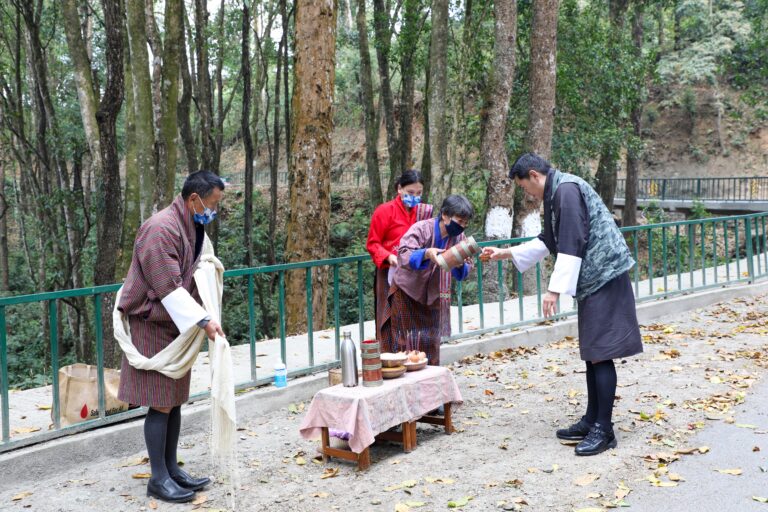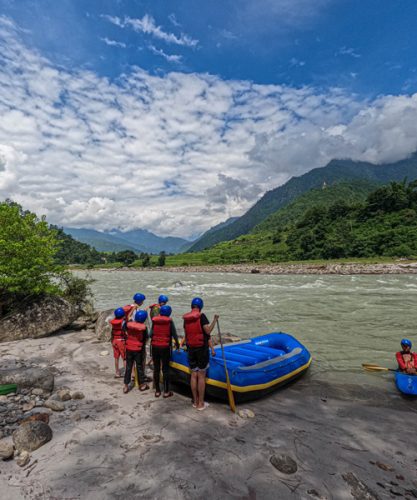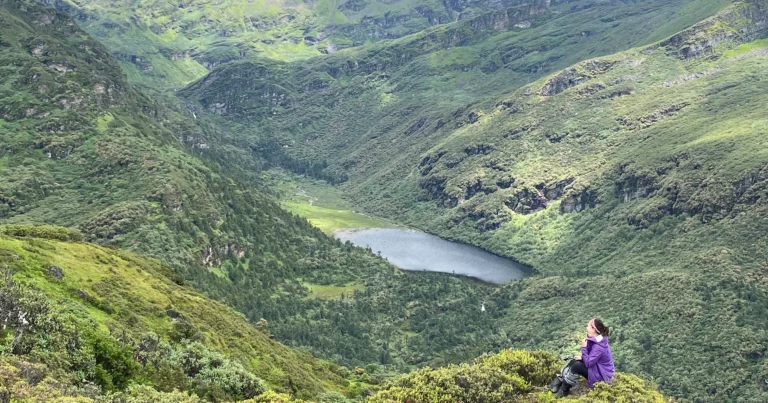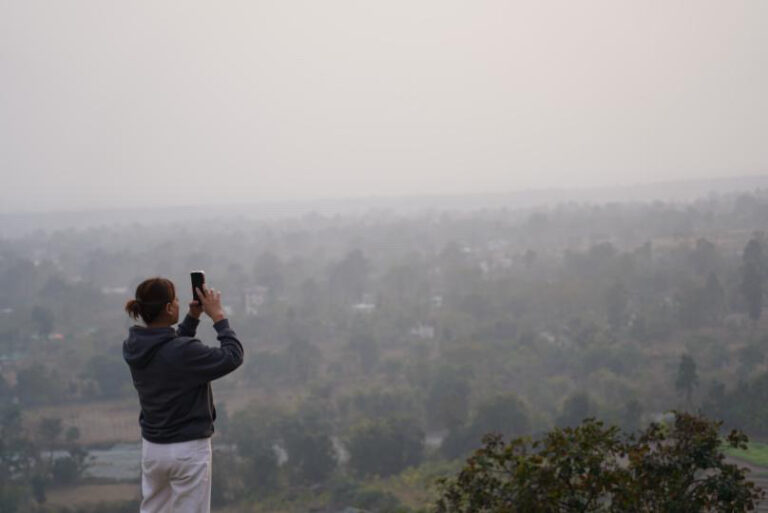CLIMATE CHANGE AND ITS IMPACT ON PADDY CULTIVATION
A Threat to Bhutan’s Food Security
Bhutan is located on the southern slopes of the Eastern Himalayas between the latitudes 26° 42′ N and 28° 14′ N and longitudes 88° 44′ E and 92° 07′ E. Of the total geographical area of 38,394 km2, 70.47% is under forest cover. Shrubs occupy 10.43%, snow 7.44%, bare rocky areas 3.20%, and meadows constitute 4.10% with a cultivated area of just 2.93%. It is a country with good forest cover and is characterized by a highly rugged mountainous agro-ecosystem where farmlands are scattered. Farming is limited to the river valleys and are generally seen as small parcels on slopes.
The generalized land use categories are kamazing (dry- land), chuzhing (terraced rice fields), and horticulture (orchards and plantation crops) with percent land coverage of 61.90%, 27.86%, and 10.24% of the agricultural land, respectively. Bhutanese farmers, in general, are smallholders who practice sustainable integrated and subsistence agricultural farming systems.
The Himalayan country Bhutan is typically an agrarian country with about 60% of the people depending on agriculture. However, farming has been constrained by the mountainous topography and rapid changes in environmental variabilities. The country has already been experiencing some impacts of climate change, such as crop loss unusual outbreaks of diseases and pests, erratic rainfalls, windstorms, hail storms, droughts, flash floods, and landslides.
In Bhutan, wetland farming is very much vulnerable and is highly dependent on climate parameters. Most of the country’s wetland farming depends on springs, fed by monsoon rain, glaciers, and natural watersheds, and for this reason, a small change in the climate parameters brings about a devastating impact on agriculture production.
This blog in particular focuses on how climate change has brought a dramatic impact on paddy cultivation and rice production and its adverse effect on the country’s food security. Numerous farmers were interviewed on the given topic of interest on their current situation with rice cultivation and the pertinent challenges faced ;
“We were preparing to sow seedlings but due to shortage of water, our lands have remained barren now. In the past, by this time all the paddy seedling plantation would have been completed and the seedlings would have already germinated. Before it used to take more than two to three days to finish the cultivation of paddy on one – to two acres of land but sufficient water supply but now things have changed. And the paddies are not even of good quality and as the quantity of paddy growing is very low it’s not even enough for self-consumption and sometimes we even have to shop from the town. All due to the shortage of water we are facing a lot of difficulties.”
Farmer Sonam
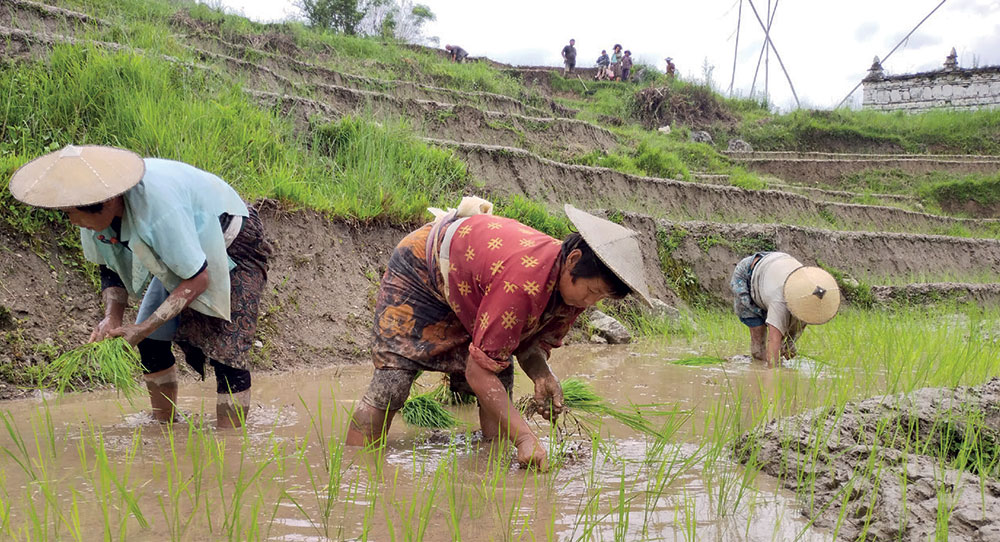
We used to do field work and now as there’s the shortage of water all our fields have turned into forests. As there’s no water, laborers and educated students have moved toward the urban centers, and only old age people are left and are not able to work.
As water sources have mostly dried up we don’t do paddy cultivation anymore instead my family has switched to alternative. That is orange farming but even the orange trees are dying. Though the oranges were growing well in the beginning, now as there is no rainfall no oranges are growing, and most of the trees are now infested with diseases and pests.
Nowadays we are also facing a shortage of drinking water. Some People are even facing hard times among themselves finding water to drink. This crisis has disrupted the community’s kinship and vitality.
“We face water shortage and labor shortage during field works and sometimes animals like wild boar end-ups destroying our fields. Due to this issue of youth migration and human – wildlife conflict , We are left with no choice but to raise the price of our rice as the labour prices are increasing at unprecedented rate . The rice production is becoming a growing challenge for us farmers”.
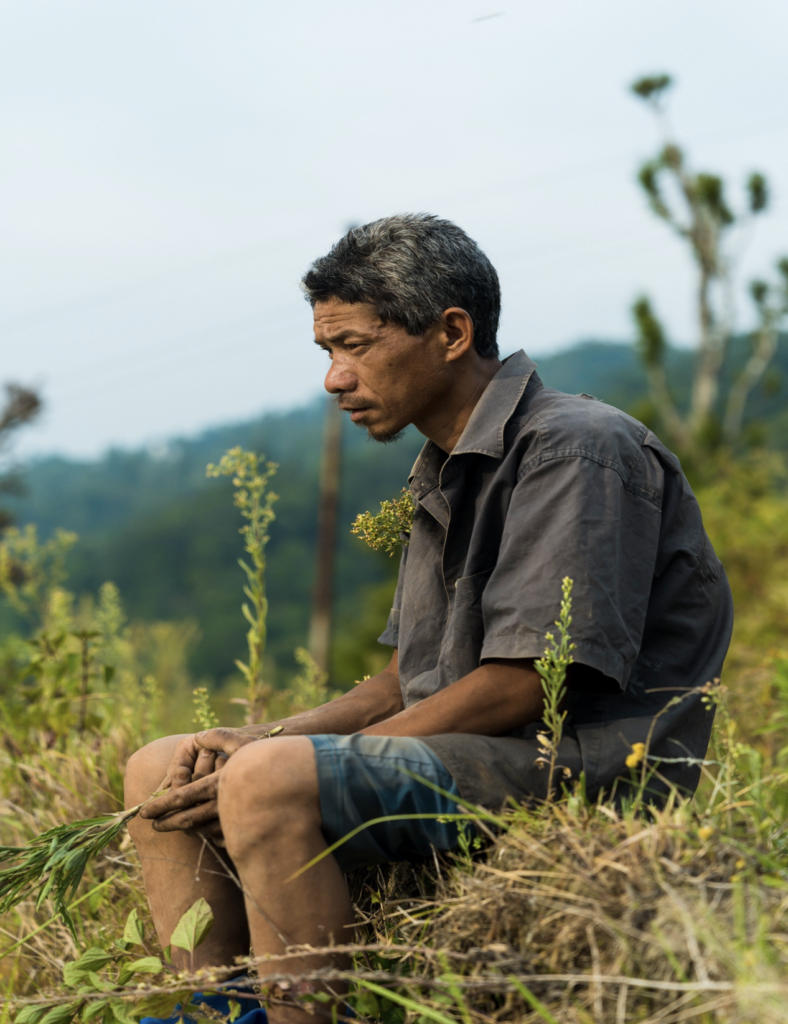

Namgay, Rice Vendor ( Centenary Farmers Market)
“From this year all the regular water sources have also dried up and when to go to the source to check the water supply there is hardly any water, the water remaining at the source is also sipping down from underneath. We have fixed the source and have been using the little water and today we have left most of our paddy field barren. Although we are only about 7 to 9 households in total, some households are facing water shortages and have decided the leave their lands barren”
Farmer Tsirang
Nowadays, many paddy fields are left barren because of the “shortage of water” and unpredictable weather conditions. While men in the village were forced to migrate to other districts, women were left behind to look after family and livestock. Which adds an extra burden on women.
Youth on other lands migrate to the urban community to look for jobs. This increasing pattern of urban migration is becoming a trend and a threat. Most notably the import of rice of increasing annually. The paddy production in the country has been dwindling over the years and has not been able to meet the domestic demands. The production dropped from 63,890 MT in 2018 to 41,049 MT in 2022 according to the agriculture census report of 2022.
However, amid challenges faced by the farmers of Bhutan, in 2019, in Tsirang new irrigation scheme was built through the National Adaptation of Programme Action (NAPA) III project of the Royal Government of Bhutan. The project, financed by the Global Environment Facility (GEF) and Least Developed Countries Fund (LDCF), was implemented by the Royal Government of Bhutan with support from UNDP to boost production. The irrigation water is targeted to benefit 12 households community.
For the first time, farmers of three chiwogs could grow rice after 15 years of leaving their wetland barren. The community joined to form the ‘Water User Association’ appointing members as “Chu Sungpa.” The introduction of climate-resilient irrigation not only got farmers back on the farm and earned them the hat of self-sufficiency and economic gains but, most notably, built ‘community vitality.’ Men returned to the village, the burden women carried lessened, and the economic gains from the paddy harvest were invested in their children’s education.
The Agriculture Research Centers in collaboration with the farmers and the extension services developed a number of improved rice production technologies in the past four decades. Today in Bhutan there are about 27 improved rice varieties available in the country, of which 15 varieties were introduced, and 12 were locally-bred for specific climatic zones of the country. Today there is a need to enhance the resilience of Bhutan’s farming to the impacts of climate change through stepped-up cross-sectoral strategic options like policy support, enhanced investment, R&D, and technology generation.
This blog is submitted as a part of Climate Action Network Champion Grant.
Reference :
Chhogyel and Kumar Agric & Food Security
Chencho Norbu , Former Secretary National Environment Commission Secretariat
Kuensel , Bhutan Times
